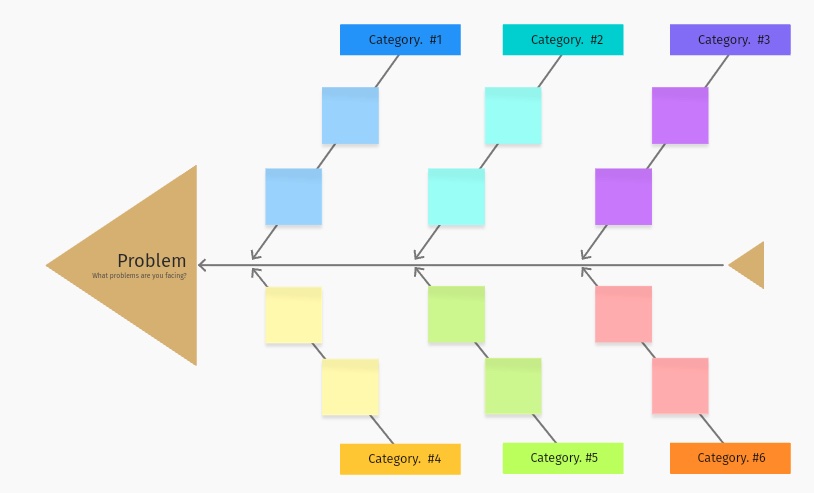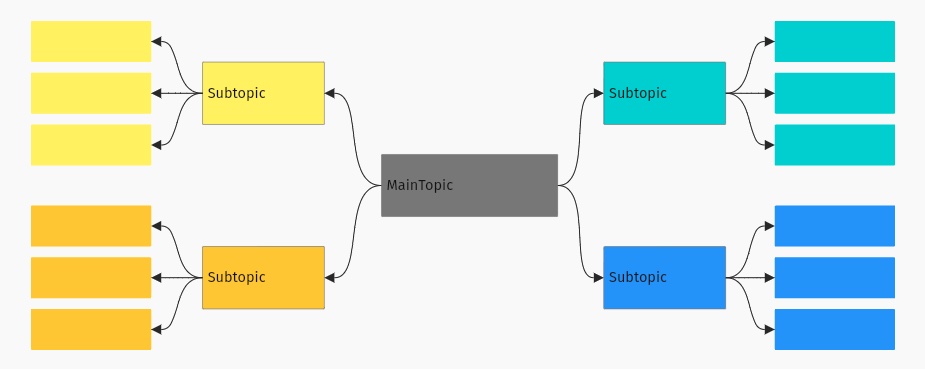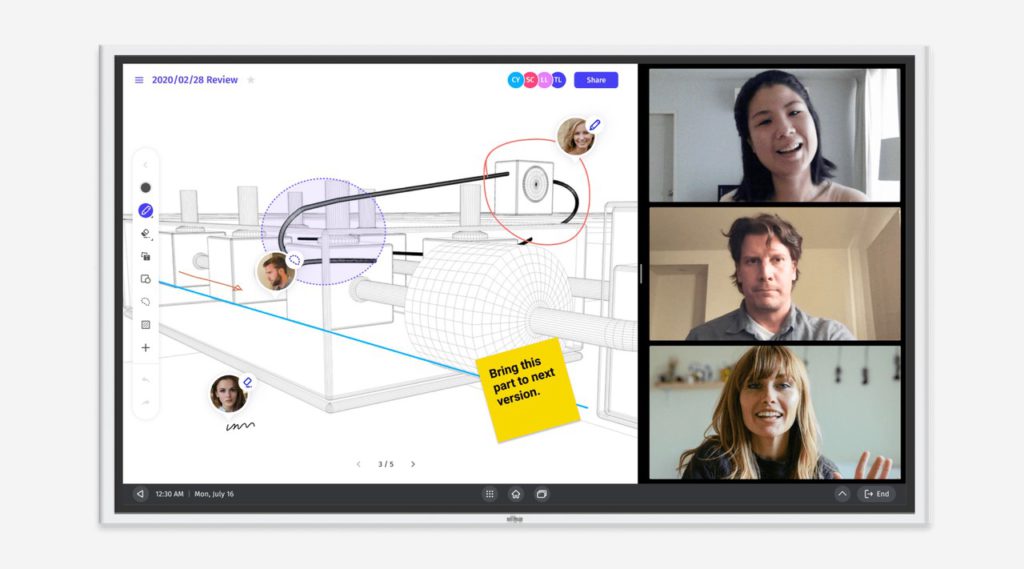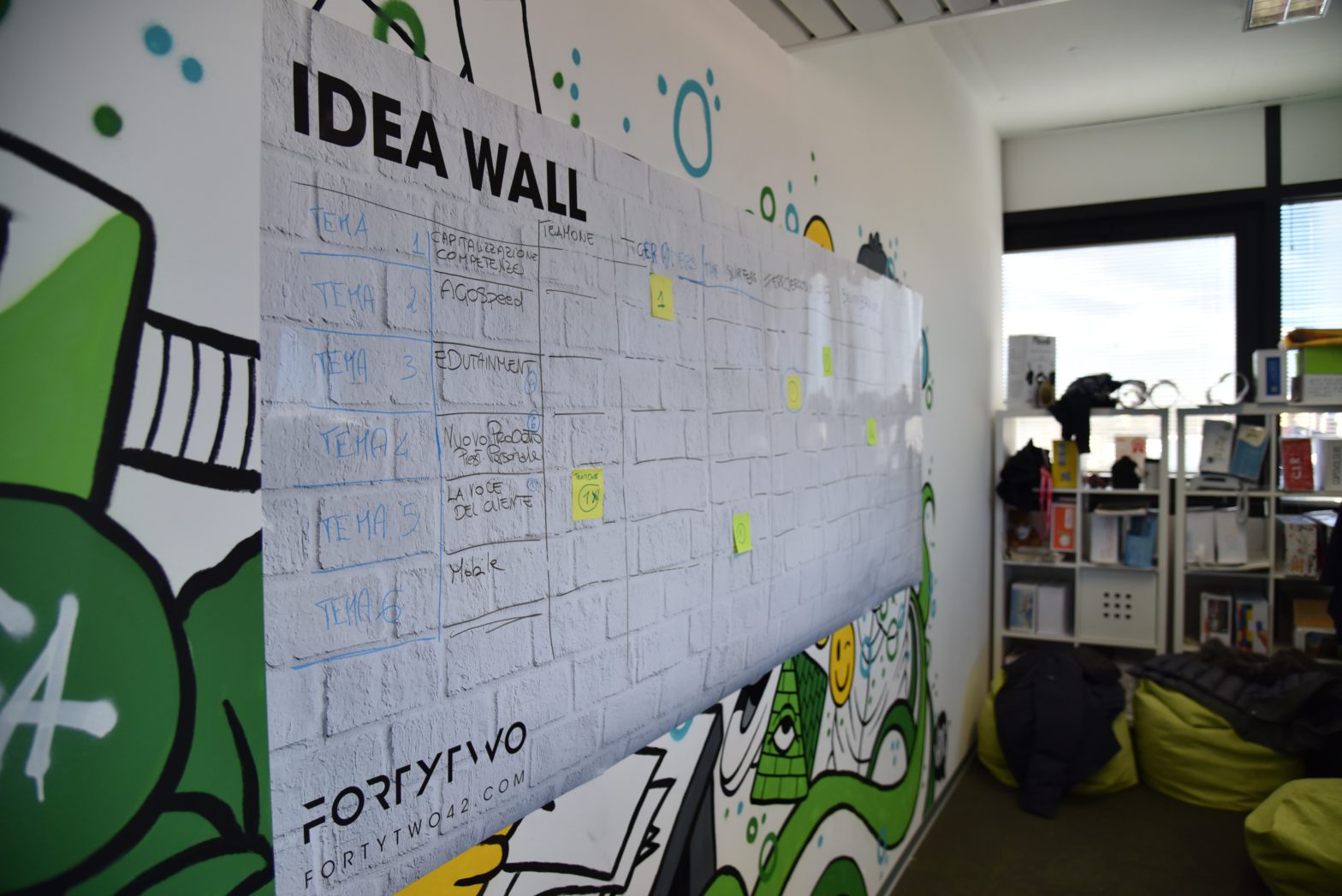Ideas are everywhere. Often, it’s a single idea that sparks an entire business—but that’s not where the ideation stops. Some of the world’s most well-known ideators, such as Walt Disney or Albert Einstein, have one thing in common: they never stopped thinking of new ideas. While some ideators are born with a natural ability, it’s not a requirement. With practice, anyone can become an ideator. Here are a few tips for becoming an ideator–and how a Vibe Smart Whiteboard can help you get there.
What Is an Ideator?
The term ideator comes from the word ideate, which, according to Merriam-Webster, means to form an idea or concept. Broadly speaking, ideators are individuals who are constantly thinking about new ways to solve problems or challenge the status quo.
Gallup’s popular StrengthsFinder assessment defines those who score high in the “Ideation Theme” as people who are fascinated by ideas—and there are a few key characteristics that are essential if you’re working toward becoming an ideator.
Come from a place of yes.
Successful ideators are masters at problem solving. The reason they’re so effective at finding solutions to complex problems is because they’re determined to consider issues from all perspectives. Think of the old business saying, “try to put yourself in your customer’s shoes.” When faced with a problem, ideators consider every stakeholder’s perspective when thinking about a solution, not just the pain points of their direct customers.
Lean into big problems.
In businesses of all sizes, it can be difficult to know where to start with large, complex problems. Instead of brushing them to the side or finding quick bandaid solutions, ideators dive right into finding solutions or new ways of doing things. Effective ideators don’t stop at one or two ideas though—in fact, sometimes they come up with hundreds of ideas.
Channel maximum creativity.
Effective ideators can uncover new concepts and solve problems because they’re creative. Everyone is capable of being creative. Unlocking your creativity can be as simple as taking a walk outside, talking with others, or trying something new. However, channeling creativity is not a one-time thing. Creative individuals are known for finding the methods that make them feel the most inspired and then sticking to them on a consistent basis.
7 Ways to Use a Vibe Smart Whiteboard for Ideation
In today’s workplace, an ideator isn’t necessarily one person’s full-time position. While it can be a solo job, it’s more common for a group of people, or ideators, to collaborate together.
The term ideate also appears in the Design Thinking process, which is widely credited to the design and innovation agency IDEO. While “design” is in the name of the process, Design Thinking can really apply to businesses in any industry.
Ideating is the third phase in the Design Thinking process, coming after empathizing and defining, but before prototyping and testing. Phase three consists of a series of sessions using a variety of different ideation methods to come up with as many new solutions or ideas as possible. In the ideate phase, there isn’t one central ideator responsible for coming up with ideas, but a group of individuals who work together. (Ever heard the expression “Many hands make light work”?)
From serious to silly, here are seven of the most effective methods for ideation and the best Vibe Canvas templates to help you have a productive session.
1. SCAMPER
SCAMPER stands for Substitute, Combine, Adapt, Modify, Put to another use, Eliminate and Rearrange. Each word serves as a starting point for ideators to think about a product, service, challenge or situation through a different lens. SCAMPER can be especially effective for solving broad challenges. For example, supply chain shortages may mean it’s time to look at a product or service from a variety of different perspectives to see how it can evolve.
The Fishbone Diagram Template is a great way to execute a SCAMPER session focused around a problem. Simply assign a term to each category and get started.

Our Project Management Template is another great starting point for a SCAMPER session. To set up your board, click and drag to select, copy and paste two additional columns. Then, rename each column with a corresponding word and you’re ready to get started.
2. Brainstorming
Few ideation methods have stood the test of time as well as the reliable brainstorm. With few rigid rules, brainstorms are flexible, which often allows sessions to be more casual and inspire a more free-flow vibe for ideation.
At the same time, brainstorms can occasionally become too flexible. When this happens, it’s easy to get off topic or for participants to lose focus. Depending on your team, you may need to set some boundaries with either a time box or a preferred style. In today’s era of virtual video conferencing, rapid ideation is one form of brainstorming that can maximize ideation in a short period of time.
Our Blank Canvas is ideal for a rapid ideation session. It requires minimal setup, and the Vibe Canvas is accessible from anywhere. Participants can join from different time zones and on any device. The Vibe Canvas is also endless, so there’s no limit on space. Plus, everything is automatically saved in the cloud, so you can brainstorm without worrying.
3. Brainwriting
Brainwriting is a more structured version of the brainstorm, designed to be more anonymous to avoid any bias or concern over sharing ideas. During a brainwriting session, a group leader makes a list of ideas and allows each participant to anonymously write their ideas during a preset period of time. Once time is up, the ideas are passed to another participant who builds on those ideas during another quiet, anonymous session.
Our Brainwriting Template comes pre-built so you don’t have to worry about arranging stickies ahead of your session.
4. Mind Mapping
Mind mapping is an excellent ideation method for organizing relevant information and showing associations between different topics or themes. It’s also helpful for teams that like to be more visual. Mind mapping can be effective if you have one central problem or topic but several other related issues or subtopics.
Instead of trying to keep track of these subtopics mentally or using a linear list, it’s easier to see them all at once for total context. If you have a lot of different subtopics, your mind map could get a little overwhelming. If this happens, consider dividing your group into smaller breakout sessions to tackle certain areas. Then, bring the group back together to review all ideas and how they relate to the central topic.
Our new Mind Mapping Template also comes pre-built so you don’t have to spend time designing your own mind map. It’s fully customizable too, so if you need to add subtopics, it’s easy to click and select groups of shapes to move them wherever you’d like or duplicate them if need be.

5. Storyboarding
According to Nielsen Norman Group, storyboarding is effective because it helps us tell stories about our users. While storyboarding is especially useful in the UX industry, it can broadly be applied to any industry from an internal or external stakeholder standpoint.
Storyboards are simple to set up and involve only a series of boxes that visually communicate a story through a chronological sequence. Our Blank Canvas is perfect for storyboarding sessions because you can easily upload images or other multimedia directly to each sequence square.
In UX specifically, each storyboard represents a unique scenario with visual sequence squares and captions or commentary underneath each box. Many UX storyboards are persona-based, representing a specific type of user with a clearly defined journey. Our Customer Journey Template is an easy way to map persona journeys to guide efficient storyboarding sessions.
6. Mash-Up
Mash-p is a fun ideation method that brings together two unrelated categories to inspire deeper levels of ideation. Begin by picking an ideation topic and then challenge yourself to pick a completely different topic—one that might at first seem like an odd or unusual pairing. Get creative and challenge yourself to go outside of your industry when selecting a second topic.
Before you begin selecting topics, you’ll need to identify a problem statement. Our Problem Statement Template is a great way to align on a solution-focused starting point before you get started with a Mash-Up session.
Mash-Up is meant to be quick, with the goal of coming up with as many ideas as possible. Once you have your pairings, ideate rapid-fire style on each individual topic. Then, combine the items from the two lists to generate as many new ideas as possible in a second rapid-fire session.
{{< blog/cta-download-new content="Product Comparison Report" extra="false">}}
7. Worst Possible Idea
Much like the name suggests, the goal of this ideation method is to intentionally come up with the worst possible ideas to inspire solutions, new products, or services. According to the Interaction Design Foundation, the worst possible idea method is effective because it creates a relaxed, shame-free atmosphere where the silliest, wildest ideas are encouraged.
If you’re questioning whether this method could actually be effective, there are a few promising examples.
Co-author of “The Startup Owner’s Manual,” Bob Dorf, quoted in the article above, writes about a worst possible idea session that included one idea: “round down everyone’s deposits to the nearest dollar.” Dorf notes that Bank of America’s popular “Keep the Change” program might have been inspired by this worst possible idea. Our Brainwriting Template or the Blank Canvas are perfect places to capture all your intentionally terrible ideas.
Turning Ideas into Actionable Next Steps

Ideation sessions can be both inspiring and fun, but don’t let your hard work go to waste. Post-ideation session, be sure to export your Vibe board to all participants or relevant stakeholders for further consideration.
Since many of the ideation methods above are intended to produce a higher quantity of ideas, consider using our Action Priority Matrix for idea management. This template can be effective in helping to narrow down the ideas you’d like to prioritize moving into further development.
Vibe’s app integrations also make it easy to export tasks and deliverables directly from your board to your project management software of choice. If you’re not using project management tools for idea management, you can easily keep track of projects and deliverables using our Project Management Template.
Ready to elevate your next ideation session? Check out this demo to see Vibe in action!
